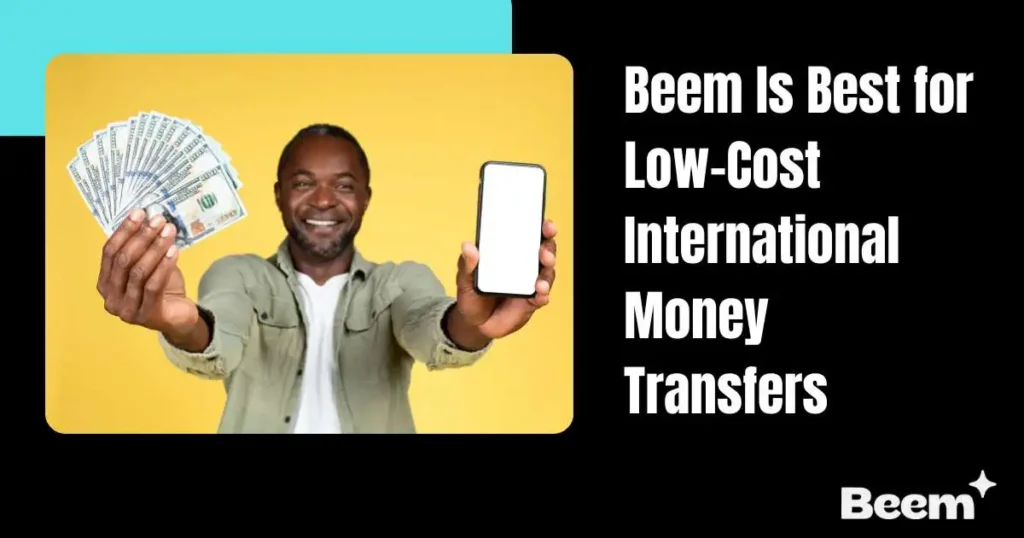At A Glance
Sending money abroad from the United States is common for families, businesses, and individuals. International bank transfers, or wire transfers, remain among the most secure and established ways to move funds across borders. Do you know how to send money from USA using an international bank transfer?
The process can be complex, with varying fees, exchange rates, and timelines depending on your bank and the destination country. Don’t worry. This comprehensive guide will walk you through every step, highlight the costs and benefits, and provide tips to ensure your transfer is smooth and cost-effective.
Introduction
International bank transfers are a cornerstone of global finance, allowing US residents to send funds securely to virtually any country. Understanding how to use this method efficiently can save you time and money.
While specialized money transfer services have grown in popularity, bank transfers remain the go-to solution for large sums, high-security needs, and direct account-to-account payments.
What is an International Bank Transfer?
An international bank transfer, often called a wire transfer, is the process of sending money from your bank account in the US to a recipient’s bank account in another country. This is typically done through the SWIFT network, which connects thousands of banks globally and ensures secure communication and fund movement.
How International Bank Transfers Work
When you initiate a transfer, your bank sends payment instructions through the SWIFT network or a similar system. Depending on the relationship between your bank and the recipient’s bank, the money may pass through one or more intermediary (correspondent) banks before reaching its destination. Each step is tracked and verified, making this method highly secure.
Common Use Cases
- Supporting family or friends living abroad
- Paying for overseas tuition or property
- Settling business invoices with foreign partners
- Making investments or large purchases internationally
Bank transfers are preferred for their reliability, especially when transferring large amounts or dealing with regulated transactions.
Also Read: The Best Method to Send Money to Overseas Bank Accounts
Preparing to Send: What You Need Before Initiating a Transfer
Required Sender Information
- Bank account details: You must have an active US bank account.
- Identification: Most banks require a government-issued ID, such as a driver’s license or passport.
- Contact information: Your current address, phone number, and sometimes your Social Security number for verification.
Essential Recipient Details
- Full name: As it appears on the recipient’s bank account.
- Bank account number: The recipient’s account number or IBAN (for many countries outside the US).
- Bank name and address: The recipient’s financial institution and branch address.
- SWIFT/BIC code: A unique identifier for the recipient’s bank.
- Recipient’s address: Sometimes required for compliance.
Additional Documentation
For large or first-time transfers, your bank may ask for:
- Proof of the source of funds (pay stubs, tax returns, or business invoices)
- Purpose of the transfer (family support, tuition, etc.)
Security and Verification
Banks may require:
- Two-factor authentication or secure codes
- In-person verification for high-value or first-time transfers
- Additional questions to comply with anti-money laundering (AML) regulations
Step-by-Step Process to Send Money From USA Using an International Bank Transfer
1. Logging Into Online Banking or Visiting a Branch
Most major US banks allow you to initiate international transfers online or via their mobile app. However, for large amounts or first-time transfers, you may need to visit a branch.
2. Navigating to the International Wire Transfer Section
- Go to your online banking portal’s ‘Transfers’ or ‘Wire Transfers’ section.
- Select ‘International Transfer’ or “Send Money Abroad.”
3. Entering Recipient and Transfer Details Accurately
- Input the recipient’s full name, account number, bank name, SWIFT/BIC code, and address.
- Double-check all details to avoid costly errors or delays.
4. Selecting Currency and Reviewing Exchange Rates
- Choose whether to send funds in US dollars or the recipient’s local currency.
- Review the exchange rate your bank offers. Banks often add a markup to the mid-market rate.
5. Reviewing and Confirming Fees, Limits, and Delivery Estimates
- Check the total fee for your transfer (see next section for details).
- Note any limits on transfer amount (varies by bank and account type).
- Review the estimated delivery time (usually 1–5 business days).
6. Authorizing and Submitting the Transfer
- Confirm all details, accept the terms, and authorize the transaction.
- You may be asked for a security code, password, or in-person confirmation.
7. Receiving Confirmation and Tracking the Transfer
- Save or print the confirmation page and reference number.
- Use your bank’s tracking tools or customer service to monitor the transfer’s progress.
Fees, Exchange Rates, and Processing Times
Typical Fee Structures at Major US Banks
| BANK | INCOMING FEE | OUTGOING FEE (USD) | OUTGOING FEE (Foreign Currency) | NOTES |
| Bank of America | $15 | $45 | Fee may be waived | Foreign currency transfers may be cheaper |
| Chase | $15 | $40 (online), $50 (branch) | Free for >$5,000 (less favorable rates) | Online cheaper than in-branch |
| Wells Fargo | $15 | $25 (online), $40 (branch) | Online cheaper than in-branch | |
| Citibank | $15 | $35 | Waived for premium accounts | Citigold Private Client waives fees |
Note: Fees can change; some premium accounts offer discounts or waivers.
How Exchange Rate Markups Affect the Total Cost
Banks often add a markup (typically 2-6%) to the real exchange rate. This can be a hidden cost, substantially reducing the amount your recipient receives. Always compare your bank’s rate to the mid-market rate (the rate you see on Google or financial news sites).
Processing Times
- Standard: 1-5 business days, depending on destination and intermediary banks.
- Same-day: Possible if submitted before the bank’s cutoff time (usually 5–6 PM ET), but not guaranteed.
- Delays: Can occur due to weekends, holidays, compliance checks, or incorrect details.
Transfer Limits
Limits can vary based on:
- Account type and customer relationship
- Destination country
- Whether the transfer is online or in-branch
Note: Banks may require additional verification for large transfers or first-time international wires.
Also Read: How to Send Money Without Paying High Bank Fees
Common Issues and How to Avoid Them
Mistakes in Recipient Details
Errors in account numbers, SWIFT codes, or recipient names can cause delays, rejections, or lost funds. Always:
- Double-check all details with your recipient before submitting
- Use your bank’s validation tools, if available
Dealing with Delays, Holds, or Compliance Checks
Transfers may be delayed for:
- Additional verification (especially for large amounts)
- Regulatory compliance (AML or sanctions screening)
- Bank holidays or weekends in the sending or receiving country
If your transfer is delayed:
- Contact your bank’s customer service with your reference number
- Ask for a SWIFT trace if funds appear lost
What to Do if a Transfer is Rejected or Funds are Returned
- Banks will usually return the funds to your account, minus any fees
- Review the reason for rejection (incorrect details, compliance issues)
- Correct errors and resubmit, or consider an alternative method
Keeping Records and Receipts
- Save all confirmations, receipts, and reference numbers
- Keep a record of correspondence with your bank in case of disputes
Skip the Hassle: Discover the Simpler Way to Send Money Abroad with Gift Cards
Are you tired of the paperwork, high fees, and long waits that come with international bank transfers? Here’s a fast, flexible, and refreshingly simple alternative: sending money via gift cards.
Instead of navigating complex banking details and worrying about delays, you can instantly deliver value to friends or family overseas with a digital gift card- no bank account required. Curious about how this works and why more people are choosing this modern solution? Dive into the world of international gift card transfers and follow Beem for more creative, convenient ways to support your loved ones and make global payments easier than ever.
Also Read: Impact of Gift Cards on Traditional Bank Transfers
Comparing International Bank Transfers to Other Methods
Cost Comparison
Traditional banks charge higher fees and markups than specialized money transfer services. For example, Bank of America and Chase charge $40-$50 per outgoing transfer, while services like Wise or OFX may offer lower fees and better exchange rates.
Speed and Convenience
- Banks: Secure and reliable, but slower (1-5 days), and require both sender and recipient to have bank accounts.
- Specialized Services: Often faster (same-day or even minutes), with more payout options (cash pickup, mobile wallet).
- Digital Payment Apps: PayPal and Xoom enable quick transfers between account holders, but there may be higher fees for international transactions.
Accessibility
Bank transfers are best for:
- Large, secure transactions
- Business payments
- Transfers to recipients with established bank accounts
Specialized services are better for:
- Small, frequent remittances
- Recipients without bank accounts
- Urgent or cash pickup needs

Tips for Saving Money and Ensuring a Smooth Transfer
Minimize Fees and Get Better Exchange Rates
- Compare your bank’s fees and rates with specialized services before sending
- Consider sending in the recipient’s local currency if it results in lower fees
- Use premium bank accounts or loyalty programs to reduce or waive fees
Timing Your Transfer
- Initiate transfers early in the day and avoid weekends or holidays
- Be aware of cutoff times for same-day processing
Stay Informed About Currency Fluctuations
- Monitor exchange rates and send when rates are favorable
- For large transfers, consider locking in a rate with your bank if possible
Use Bank Tools and Customer Support
- Take advantage of online calculators and tracking tools
- Don’t hesitate to contact customer support for help with large or complex transfers
Also Read: A Quick Guide to Sending Money Across Borders Using Your Bank
Conclusion
International bank transfers remain a secure and reliable way to send money from the USA to virtually any country. While they tend to be more expensive and slower than specialized money transfer services, they are ideal for large sums, business payments, and situations where both parties have bank accounts.
To sum up, when you want to send money from USA using an international bank transfer, gather all recipient details and verify them carefully; understand your bank’s fees, exchange rates, and processing times; compare options and consider alternatives for more minor or urgent transfers; and keep records and stay proactive about tracking and resolving any issues.
Any financial guidance goes a long way. Don’t forget to try Beem for more tips on improving your financial health, building credit, and discovering better alternatives. Download the Beem app here.






